
Giorgia Calabria is a Senior Talent Manager Benelux & HeForShe Lead at Danone, The HR Congress contributor
WHY SHOULD YOU CARE?
We should not forget that the biggest source of talent is our own company. With the new reskilling journey, we need to rely less on job titles/functions and the typical career paths and more on key capabilities/skills, we need to be more fluid.
I thought I’d had my fair share of TA experiences and challenges in my 12 years working in HR and recruitment across several industries (FMCG, Pharma, IT, Tele Comms, etc.), in more than 20 countries, surviving to 4 big restructures. Then came the pandemic which shook everything up and proved me wrong. Based on my experience and the many articles I have read over the last 20 months, I don’t think I have found the holy grail, but I felt a strong desire to share with you my thoughts on the impact it has had. For this reason, I have decided to create a series of articles that focus on how to handle the changes that the pandemic and the new future of work trends are bringing, and why it is time for Talent to use our creativity and think outside the box. In my first article, I have voluntarily decided to share some general observations around the current Talent landscape that currently looks like Guernica (probably Picasso’s most famous work). In the upcoming ones, like a good art critic, I will deep dive into some key areas sharing some solutions/best practices. I hope you find it interesting.
Covid-19 has fundamentally changed many aspects of our lives in the last 2 years, and for people working in HR, it has been a strong wake-up call. Working in Talent, I have seen how the pandemic has been the most obvious and direct disruptive event affecting hiring and talent development practices. Especially during the first year, we have learned how to navigate the ambiguity, and as typically happens in turbulent times, we have found our way. In recruiting, we have found solutions to give us a competitive edge during the emergence of a new virtual candidate experience (such as video interviews and online onboarding). I strongly believe that our secret recipe has been to transform the challenges into new opportunities and use our creativity.
Let’s start with the beginning: ‘finding and hiring the right people’. This is a key mission for each company, it doesn’t matter the size or the industry, efficient and effective hiring will continue to be vital to gain the strategic edge.
We have always struggled with the lack of talent (the well-known ‘war of Talent’) in specific countries, and if we were thinking that remote recruiting was the solution to increase our external talent pools, it’s not completely accurate. We need to be aware that our company is not the only one who sees this extended talent pool as an opportunity, our competitors have too and this time at a global scale. We, therefore, need to be unique in the way we approach these top candidates. Being unique doesn’t mean that we need to offer stellar salaries but that we need to build our recruitment journey around them. We need to offer something that is memorable by changing how we write our job postings and how we run our virtual interviews and onboarding moments. Many companies are now starting the candidate experience journey not realising that we are already facing version 2.0 in which some key concepts like purpose are key pillars required to be successful.
We are still writing standard and impersonal job postings around key responsibilities and deliverables within a role instead of being focused on the experience that we can offer. Here we need to invest in our Employer Branding journey and go virtual using the channels that are used by our talent. We have to accentuate those traits that are making our culture unique and let our employees speak up. Our employees are the best influencers for our companies.
So far I have focused on my view about attracting external talent because we have a tendency to look externally when we talk about a new role. However, from my perspective, the most powerful tool we have in Talent, before going external, is managing our internal talent markets. Yes, we should not forget that the biggest source of talent is our own company. With the new reskilling journey, we need to rely less on job titles/functions and the typical career paths and more on key capabilities/skills, we need to be more fluid. We need to support cross-functional moves not looking at what is missing but what the person can bring that it’s unique and will enrich that position/team. Everything can be learnt and our inner attitude, our capabilities are more relevant than a job title.
We all have been contacted by external headhunters during our careers, right? How about has anyone been approached by an internal headhunter? I guess almost none. I strongly believe that we need to equip our TA teams with different roles, we need to change how we are designing our TA team and bring some new key players like internal headhunters, TA Data Analyst and Advisor, Career Coaches and Competencies Experts. In this way, it will be easier to understand and track the skills, capabilities, performance of our employees and build the future workforce. This kind of approach will also help with retention, too. This strategy will also increase the responsibilities of our teams that usually are 99% focused on recruitment and will help us move to the next level in which we own the full talent management process Looking at the internal talent marketplaces, we have seen some good best practices in Unilever – they have created the ‘FLEX Experiences’ which helps employees push the boundaries of their career by using an AI-powered platform to identify personalised open opportunities across the business, in real-time (if you are curious about the Internal Talent Accelerators/Markets best practices, do not miss my next article).
Some weeks ago, I was attending a workshop about the future of recruiting and someone from the audience asked this question to the speaker “what’s next in TA?” With his answer, he was underlining how the speed and uncertainty of this period it’s not helping predict what the coming months will bring and how our TA processes will evolve. What the literature is also affirming it’s that remote/hybrid work is here to stay, that we need to push more and more to adopt new AI tools in Talent/HR (like Intelligent screening software, Recruiter chatbot, etc.) and that to be successful we need to keep investing in Employer Branding and Candidate experience processes.
What I know as someone passionate about Talent, it’s that we play a strategic role in our organisations and sometimes we are even underestimated – perhaps, it is because we keep using only one approach, or simply because we don’t see our power. To move to the next level, we have to leave our comfort zone, we have to bring the outside in and look at it with a kaleidoscope, to see all the possible angles. We need to be creative, we need to feel strong when nothing is clear around us and we need to offer purpose to our employees humanising our employee value proposition to appeal to those who believe our company no longer meets their needs – we are here for them. If we transform this concept into a mantra, we can successfully face the next crisis head-on with our purpose and value serving as our compass.
As shared at the beginning of the article, this is just the first one of a series focused on the TA trends – the next one will be a deep dive into the Internal Talent Accelerators/Markets. Are you curious? Keep an eye out for my next articles.
…
Our next event on Talent Management:

Written by: Giorgia Calabria
Future of Work HR Strategy Recruitment Strategy & Transformation Talent
Previous post

- 352
labelNews today2022.02.10.
NOKIA: Putting our people at the heart of everything we do
NOKIA is Nokia has launched a new people strategy, putting our people at the heart of everything we do, says Stephanie Werner-Dietz, Chief People Officer at Nokia. We are living [...]
Similar posts

labelArticles today2024.07.24.
AI-Powered HR: Strategic Benefits and Practical Applications

labelArticles today2024.06.24.









Post comments (0)